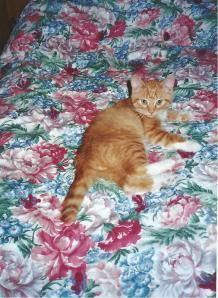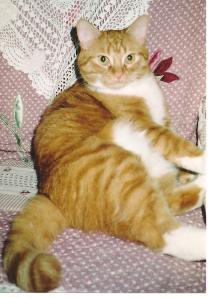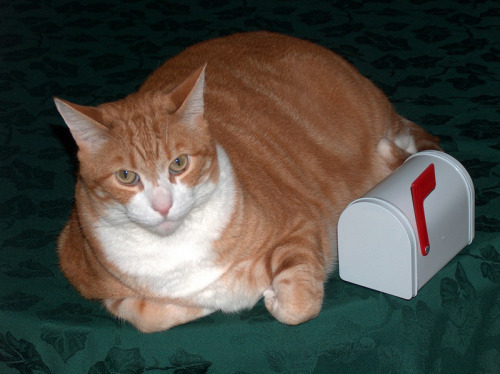Nancy I. Sanders's Blog, page 69
October 22, 2013
Highlights: Self-Editing Checklist
Now I’m going through the process of self-editing the nonfiction article I wrote to submit to Highlights magazine. I know it’s going to take me a little bit to gather photo research and my expert’s review, so in the meantime, I’m planning on putting on my editor’s hat and sitting down for various sessions of self-editing my manuscript.
My husband Jeff teaches fourth grade. I’ve written writing curriculum for kids from preschool through fifth grade. Even from the earliest grades, kids are taught to self-edit their stories and read over them multiple times to check for mistakes.
Hey, if kids can learn how to self-edit their manuscripts, you can, too!
I have a self-editing checklist I’m following to make sure I cover all the bases. I posted it online at the site of my writing buddies, Writing According to Humphrey and Friends. Just scroll down to the section:
RUBRICS TO HELP EVALUATE OR CRITIQUE MANUSCRIPTS OR PUBLISHED BOOKS
Click on the link to the Nonfiction Article Self-Editing Checklist.
Download the free pdf and print it out. Then put a second copy of it in your Writer’s Notebook for future self-editing sessions.
Here’s how to use this checklist:
CONTENT
Go through your beginning, middle, and ending and check to make sure the information goes from Point A to Point B. I had to rearrange a few of my sentences and section breaks to make the progression smoother. This is also the time to include details, descriptions, and anecdotes if you haven’t yet. There’s a delicate balance of this in nonfiction, depending on what your publisher likes, so be sure to refer often to a sample article similar to in structure to yours that’s already published in your target magazine.
CREATIVE NONFICTION TECHNIQUES
If you’ve written all boring narrative that just tells your reader about your topic, kids won’t want to read it. (Or adults either!) This is the time to check that you’ve used fiction techniques to spice up your information while keeping 100% true to facts. Read David McCullough’s John Adams as a great example of creative nonfiction.
RESEARCH
How do you know if your bibliography is formatted correctly? Follow the same format your target publisher uses. And if they don’t show a bibliography, then visit my site, Frederick Douglass for Kids, where I list a bibliography of books I used for research. This is the format my publisher uses. It’s a very common one used by many.
How do you properly cite a quote that you use? Insert a footnote at the bottom of your page or end of your article. Include the same information you put in your bibliography. But this time, if you’re citing a book or other multi-paged source, also include the page number. Like this:
Sanders, Nancy I. Frederick Douglass for Kids. Chicago: Chicago Review Press, 2012, page 84.
And if you don’t know what a primary source is or how to find one, learn all about primary sources at my buddies’ website, Writing According to Humphrey and Friends.
MECHANICS AND GRAMMAR
Want a tip to make it easier to spot grammar and punctuation mistakes? Read over your manuscript backwards. Yup. That’s right. I do this all the time. It makes you stop and read each sentence. Your brain can’t skim ahead and miss obvious mistakes.
TARGET AUDIENCE
This is where you want to check how kid-friendly and age-appropriate your information is. Also, get out the submission guidelines for your target publisher and check off their list here to make sure you’ve got all your ducks in a row. And of course, compare it to a published nonfiction article in your target magazine.
There! That’s it! Okay…I can hear you wondering…just how long does it take me to do all that?
It depends. Sometimes I move at a leisurely pace and can take days and weeks to do this. Right now I’m moving full speed ahead on this article because I’m going to hear from an editor early next week about starting on my very next book deadline. So I’m working on this article and revising and editing it as many times as I can right now, following this self-editing checklist. I’m not doing every single thing on my list, but I’m doing most of them. I’m hoping to wrap this project up in the next few writing sessions and send this puppy in.
How about you? When do you think you can get your self-editing checklist all checked off?
And be sure to stop in on Irene Roth’s blog today to help celebrate the re-release of my how to book for children’s writers! Plus, you’ll find out about the Triple Crown of Success and how it can benefit your own writing journey.


October 21, 2013
Yes! You Can Celebration
As many of you know, I’ve been hosting a celebration here on my blog with special posts every couple of weeks or so for the re-release of my how-to book for children’s writers, Yes! You Can Learn How to Write Children’s Books, Get Them Published, and Build a Successful Writing Career. As you can see, my cat and writing buddy Pitterpat is helping celebrate by getting her picture taken with my book. She’s excited about joining in on the fun!
Today’s a very special day. My cyberspace writing friend, Irene Roth is hosting a week-long event on her blog all about my book. Thank you, Irene!
Irene and I first connected at the Working Writers Club what seems like ages ago…here’s what she just shared with me in a recent e-mail:
“I remember the first time I heard your first teleclass and I was absolutely nowhere in my writing life–by following your Triple Crown of Success, I have excelled and done quite well. Thank you!!!!”
Thank you, Irene, for your precious words of encouragement as well as featuring me this week on your blog.
So come on, all you awesome writers…join me on over at Irene’s blog, Irene Roth’s Fearless Writer’s Blog. Stop on by and say “hi”!


October 18, 2013
Author Interview: Irene Sonia Roth
Meet Author Irene Sonia Roth!
Blog: Irene Roth’s Fearless Writer’s Blog
Facebook: Irene Roth
Twitter: @soniaroth
Bio:
Irene S. Roth has published over 200 online articles for adolescents and teens. As well, she has published over 200 book reviews for kids, teens, tweens, and adults. She writes academically and creatively. She has also published over 20 books for teens, tweens, and adults. She lives with her husband and cat Tobey in Southwestern Ontario. She was born in Montreal originally. Here are several of her books:
Interview:
Q: Describe the journey you’ve taken as a writer.
A: My journey as a writer is multifaceted and complex, but every part of it is beautiful and I would not have done it any differently after much forethought and reflection.
I started writing when I was a child. I was five and six years old when I asked my mom to buy me a journal for my birthday. Ever since that day, I have been writing for fifteen minutes or more every day. I have some 200 journal books.
I started writing very early and I loved writing and I was a natural writer in that it didn’t take me long to learn how to write. My mom taught me how to read and write by the age of 3 and I couldn’t wait to write on paper.
Fast forward some fifteen years, I started university and as a student I started writing academic papers and articles. I had my first published academic journal when I was still an undergraduate. I always received awards for my writing, and I felt complete only when I was thinking, researching and writing. In the meantime, I started writing books in the area of medical ethics and ethics.
Fast forward another fifteen years, and I started thinking about writing creatively for teens and children. Since I had no inclination towards violent, paranormal or mystery types of writing, I was inclined to write more thoughtful, reflective, religious and philosophical books. They turned out to be mostly nonfiction books—but that was okay and I embraced that kind of writing.
I really didn’t feel comfortable as a storyteller. My father was the storyteller par excellence…but as for me—I loved facts and truth. Stories were not something that I enjoyed. So, most of my writing has been in the form of nonfiction for teens and kids. I am trying to break into the fictional area of creative writing, but I am finding it really hard to do so. But I write stories for personal fulfillment for awhile in order to try it to see if I could break into that complex world of fiction writing. We’ll see as time goes…I guess.
Q: What is your favorite genre to write in at this point of your career?
A: My favourite genre so far is nonfiction. I love sharing my wisdom and insight with teens and tweens. I also like writing health books for kids. I have one in the works on how to deal with juvenile arthritis.
I also love writing picture books for kids. So, I am spending a portion of every month writing a picture book. A year ago, I made it my goal to write at least one picture book a month. And I have kept to this goal. So, I have over a dozen picture books in my file folders with queries for each.
Q: What books influenced you most of all when you were growing up?
A: I had so many books that influenced me as I was growing up so it is hard to name a few. I started reading Plato and Aristotle when I was eight and nine years old, and then all kinds of Christian books. I just read and read….in fact that is how I spent a good portion of my childhood. I also loved sports and excelled in gymnastics and basketball. So, I also loved to read books about how to excel and be the best that one can be. I started reading such books when I was nine and ten years old.
Q. Share one tip you would like to give to an unpublished writer about breaking into the world of publishing and getting their first piece published.
A: The best advice I could offer beginning writers is to never give up. I was trying to break into Pockets—an upper-end magazine for kids for about 5 years. After about four years of trying, I started wondering if I would ever break into the market. Then I spoke to one of my writing friends, and she said, Irene, never give up! Just keep trying. Keep making your articles better and better and you will break into that market one day. I know you will! Well, thanks so much Marianne for telling me that because you are right!
And now…for a special treat…pictures of Irene’s writing buddy Tobey! The first is when he was just a kitten. The second, as you can see is after he’s grown.


October 17, 2013
Highlights: Contact an Expert, Part 2
Here is a copy of the e-mail I sent out to contact an expert for a review of my nonfiction article I’m writing to submit to Highlights. I’m pasting it here so you can copy it and use it to send out your own e-mail. Please feel free to tweak or change it to meet your own needs.
Dear XX,
I am currently writing a nonfiction article about XX with plans on submitting it to Highlights magazine for children. Part of their submission requirements is to have an expert review the article and send me a response.
I know you’re very busy with all you do! But I was wondering if you might be available to read my article and give a short affirmation of its accuracy.
I completely understand if you don’t have the time to do this, but your expertise is valued tremendously. I have copied and pasted the article below for your convenience if you have the time.
Thank you,
Nancy
Nancy I. Sanders
my street address
my city, state, and zip
my phone number
my e-mail address
my website
CONFIDENTIALITY NOTICE: This e-mail is intended only for the use of the individual to whom it is addressed. It may contain confidential information. Please do not share this information with anyone.
MY ARTICLE PASTED HERE
A couple of things I want to mention about this e-mail that I sent out.
THING #1
First of all, I have created a separate e-mail that I use whenever I do something official such as this to contact experts, to contact places about acquiring photographs, to contact historical societies or other people regarding my research. This free e-mail is basically MyNameResearch@providerdotcom.
This way these important e-mails always land in this e-mail folder and don’t get lost in my general e-mail. It’s especially important months or a couple of years from now when an editor contacts me to question me about the e-mail to fact check something and I can find it quickly in its own folder, not in the hundreds and thousands of e-mails I get each month from friends, family, etc.
THING #2
Secondly, I add a specific signature to the bottom of all these e-mails that is tacked on automatically:
Nancy I. Sanders
my street address
my city, state, and zip
my phone number
my e-mail address
my website
CONFIDENTIALITY NOTICE: This e-mail is intended only for the use of the individual to whom it is addressed. It may contain confidential information. Please do not share this information with anyone.
This shows the expert that I’m a professional and reminds them not to share my information about my project with others. This is important to me.
THING #3
I pasted the article below my e-mail letter because many people don’t want to click on links or attached files due to viruses. It also shows the experts that, really, this is a really short article compared to the volumes they work with. Hopefully, they’ll just scan on down and quickly press reply and give me a response.
THING #4
I pasted the entire article footnotes and all. Not only was it cool to see how my e-mail handled all these footnotes, but this shows the expert that my sources are valid. Plus, I made sure to add a footnote that includes HIS book he wrote!
NEWS FLASH! NEWS FLASH! NEWS FLASH! NEWS FLASH!
As I was writing this post about e-mailing an expert, the expert responded to my e-mail and said he’d be happy to take a quick peek. Is that cool or what?!
But what happens if you don’t hear back from the expert you contacted? Just contact another one…or another. Look for more authors who wrote books on your topic. Or contact historic societies or museums that feature your topic. Just google them and find out how to e-mail someone there.
So try it out! It’s actually kind of exciting and scary and BIG…and fun! Worst case scenario is they tell you something is a glaring mistake, but actually that’s very very helpful because then you can fix it.


Highlights: Contact an Expert
Okay, now that my first draft is written from beginning to end, it’s time to roll up my sleeves and attend to other important tasks.
I’ll plan to continue editing my article until I send it in.
But next on my agenda was contacting an expert.
Highlights asks authors to include with the submission an expert’s response after reviewing their article.
First of all, I didn’t want to send out my article until all my FACTS are lined up in my article like ducks in a row. As I just mentioned, I’ll continue to edit my article and polish it until I send it in, but part of that editing process will be to get feedback from an expert.
I didn’t want to send the expert my raw first draft, so I worked on it for a couple of hours today until it reached a point where I probably wouldn’t be cutting any more information or facts during the editing process.
Now I was ready to contact the expert.
But how did I find my expert, you may ask?
Well, actually, it took me about 5 minutes. If you’ve never done this before, you will be surprised at how easy it is. Here are the steps I took.
How to Find an Expert
Step 1. Look at the big, lengthy reputable books you used for research on your topic. Write down 1-5 names of the authors of these books.
Step 2. Google the names along with the keywords “website” or “blog.” Most of these authors have some presence on the Internet these days.
Step 3. Locate their blog and verify it’s the person you’re looking for. Look on their website or blog for “contact me” or “email me.”
Step 4. Send them an e-mail.
See? Wasn’t that easy?
No? I can hear you asking…what do I send in the e-mail?
Glad you asked! Since I’m sharing with you in real time what I really do in this journey to write and submit an article to Highlights, in my next blog I’ll share a copy of the e-mail I sent.
See you back here soon!


October 16, 2013
Highlights: Writing Session 4
I sat down for my final session to work on my last chunk of the first draft of my article.
You may have noticed that I didn’t try to write all four chunks in one sitting.
I often break my writing into chunks. When I write fiction, I’ll sit down to write one scene or one chapter or one stanza of a rhymed picture book. I think this helps keep the writing fresh.
So, for my ending on my Basic Plot Worksheet for my nonfiction article, I sat down to write the final paragraphs of the first draft.
This writing session was very similar to my last one. By now I was getting into a rhythm. This often happens when I’m writing nonfiction. I develop a rhythm of research/write/edit/research/write/edit.
If I were working on an entire nonfiction book, this rhythm and pattern would continue over days and weeks and months. My book Frederick Douglass for Kids took me about 9 months to write.
First I spent time editing the first three sections of the manuscript.
Second I researched and read my primary source materials and also some of my other sources for about an hour and a half, jotting down notes and potential quotes and potential sentences/paragraphs along the way.
Third I headed to the computer and typed out the ending of my article.
Fourth, I pulled up my word document where I had typed my sample published article that I’m targeting from Highlights. I compared its structure and format and word count with my first draft and adjusted places that were too text heavy (one of my biggest weaknesses) or not clear and focused.
Yay! A sense of accomplishment. My first draft was completed from beginning to end.
Now I’ve got something to work with.
How about you? Are you finished yet with your first draft? If not, make it your goal to finish the first draft of your nonfiction article that you’re going to submit to Highlights.
Then come back here and see what’s next on the agenda. Exciting things ahead!


October 15, 2013
Yes! You Can Winner
Thank you, friends, for helping to spread the word about the re-release of my writing book, Yes! You Can Learn How to Write Children’s Books, Get Them Published, and Build a Successful Writing Career.
Everyone’s name was put in a hat…and the number of places you posted was the number of times your name was added in.
And the winner, chosen totally at random from out of the hat, was Beth MacKinney!
Congratulations, Beth! Keep an eye out on your mailbox because I’ll be putting 5 of my published books in a package and mailing it your way!!!
Thanks again, everyone who participated, for your encouragement and support.


October 14, 2013
Highlights: Writing Session 3
I was ready to tackle the next section of my manuscript.
First thing, I got out my Basic Plot Worksheet A. It’s the roadmap I’m following as I write my nonfiction article.
This is the third part which is actually the 2nd half of the Middle.
Before I dove into writing, I went back to self-edit some of the sections I wrote in my previous writing session. I usually like to start out a writing session like this. It gives me time to look at what I wrote with fresh eyes. Plus, it helps me pick up the thread where I left off.
Before I started the editing process, I made sure to save this file as a new version so my last version wouldn’t get lost. I saved this as version D.
When you edit your own manuscript, you’ll see your own weak spots. Here’s what I noticed in mine:
I realized I needed to reorganize the sentences into a different order in my Beginning.
In the first half of the middle, I realized I had headed off on a bunny trail away from my main topic. So I deleted several sentences completely. (I felt confident doing this since all those sentences are still intact in my previous version of the manuscript.)
I found different quotes to pull the theme back together and rewrote two of the three paragraphs I’d worked on in my previous writing session.
Now I was ready for writing the second half of the middle on my plot chart.
I sat down and read through a couple of different research books on my topic for the next hour and a half. As I read, I jotted down on scrap paper potential sentences and quotes that I liked. I wrote three more rough paragraphs. Wahoo!
After my research session, I headed into my office to type my next three paragraphs into my manuscript.
Now for the comparison test.
I pulled up on my computer my sample target article I had typed word-for-word. I compared my word count with it.
Uh-oh. I had already hit 1000 words and I still had the entire ending to go! This is always an issue I have to deal with when I write nonfiction for a magazine. I’m so used to writing entire books of nonfiction where I can create scenes and utilize long quotes. I knew I needed to switch gears to write for a magazine instead.
So I compared the different sections of my manuscript with the word count in the different sections of my sample target article. This helped me see where mine was too text heavy.
I studied how my sample target article got so much information packed into so few sentences.
Then I saved my manuscript as Version E so I wouldn’t lose any of those long sentences I just wrote. Next, I trimmed my article down in a similar way to my sample target article. I cut it back to about 500 words…much more workable for hitting an 800 maximum word count that Highlights requires.
Whew! My writing session was done for the day.
And guess what?! I still don’t like my article yet. It’s still too technical and sort of disjointed.
But that’s okay. Because it’s a first draft. I usually feel my first draft is awful. You probably do too.
In fact, most writers I know never even finish that first draft because they think it stinks.
It probably does!
But I’ve learned to keep on keeping on and just get that first draft down on paper from beginning to end. Because somewhere by the time I start heading toward the finish line, something magical starts to happen. I realize I actually have something I can work with in my hands. And that’s a good place to be.
So get ready! Write the second half of your middle if you haven’t yet. Then plan to come back here again. It’s time to write the ending to our articles! (Of the first draft, that is, lol.)


October 11, 2013
Yes! You Can Celebration
Do you ever wish something fun would show up in your mailbox?
Well…here’s your chance!!!!
To celebrate the re-release of my first how-to-write book for children’s writers, Yes! You Can Learn How to Write Children’s Books, Get Them Published and Build a Successful Writing Career, I’m hosting an exciting opportunity right here on my blog for the chance to win FIVE of my published books!
For extra fun, these are going to be a MYSTERY. You won’t know until they arrive in your mailbox just which titles you’ll get.
Will there be a copy of D is for Drinking Gourd? Princess Batilda? America’s Black Founders? My newest release Danger on a Silent Night? Or…?
Ooooh, don’t you just love a good mystery?
Here’s what you can do to participate.
Step 1:
Send out the good news on your social networking about my book, Yes! You Can Learn How to Write Children’s Books, Get Them Published and Build a Successful Writing Career
You can tweet or post on Facebook or pin its cover on Pinterest in any way you want, or recommend it to your friends on Goodreads…or any other way you like to share fun stuff with your friends.
Here’s the link to share:
Yes! You Can Learn How to Write Children’s Books, Get Them Published and Build a Successful Writing Career
Step 2:
Come back here and post a comment on my blog telling me that you helped spread the exciting news about my book.
Let me know where you posted the news. For each different place you post, I’ll put your name again in the hat. For example, if you post on Facebook and tweet on Twitter, I’ll put your name twice in the hat. This increased your chances of being a winner!
I’ll take names from comments posted here on my blog TODAY and TOMORROW (October 11 and 12, 2013).
Step 3:
I’ll put everyone’s name in a hat who posts a comment today and tomorrow and draw out ONE lucky winner to send a fun MYSTERY package of FIVE of my published books that will arrive in the MAILBOX of the winning name!
Step 4:
I’ll announce the winner of the MYSTERY books here on this blog early next week.
So come on and join the celebration of my book…maybe YOU will be the lucky winner!!!!


October 10, 2013
Highlights: Talk About It!
Okay…I feel like I’m having a hard time writing this nonfiction article.
As I read back over it, it sounds too technical to me so far. Why would a child want to read it?
Just to let you know…I usually feel this way at some point with a manuscript I’m working on.
But I just plan to plow forward and continue working on writing my first draft anyhow.
But as a tactic I’ve often used before to get nonfiction more “child friendly,” I’ve started talking about my topic.
I talk with my husband. I talk with my friends. I talk with my kids.
I don’t usually tell people I’m writing about a topic. Instead, I just bring up my topic in casual conversation that usually starts out like, “Hey, did you ever know that…” Or “Have you ever heard about XX and how he…”
As I talk, I try to listen to myself. What do I end up saying that’s they key I repeat to different people? What are the words I choose to tell about it? How do I tell it to an adult versus when I talk about it with a child?
I also try to listen to people’s reactions. What do they express when they hear about it? Are they bored and change the topic? Do they want to find out more about a certain nugget? What do they find fascinating?
I store all these “conversations” in my head. I even write some down. I plan to use these as I edit my manuscript to reflect what my conversations revealed.
So, how about you? Are you talking about your topic to the people around you? If not, start today! See what key words you choose to use. Discover what interests people the most. Then use these treasures to continue to shape your article.


Nancy I. Sanders's Blog
- Nancy I. Sanders's profile
- 76 followers


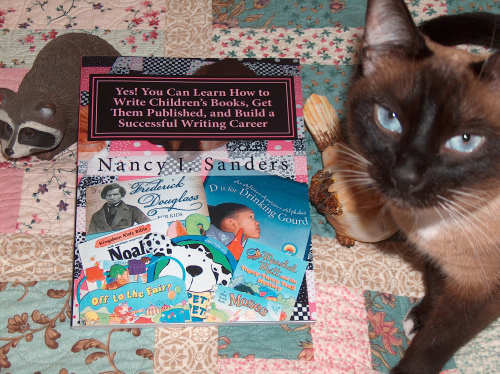
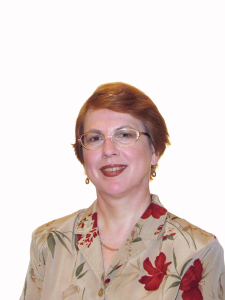
![9781612440682_p0_v1_s260x420[1]](https://i.gr-assets.com/images/S/compressed.photo.goodreads.com/hostedimages/1382201884i/5749608.jpg)
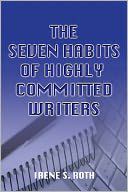
![Seasons%20of%20Empowerment%20for%20Adolescent%20Girls-650x500[1]](https://i.gr-assets.com/images/S/compressed.photo.goodreads.com/hostedimages/1382201884i/5749610.png)
